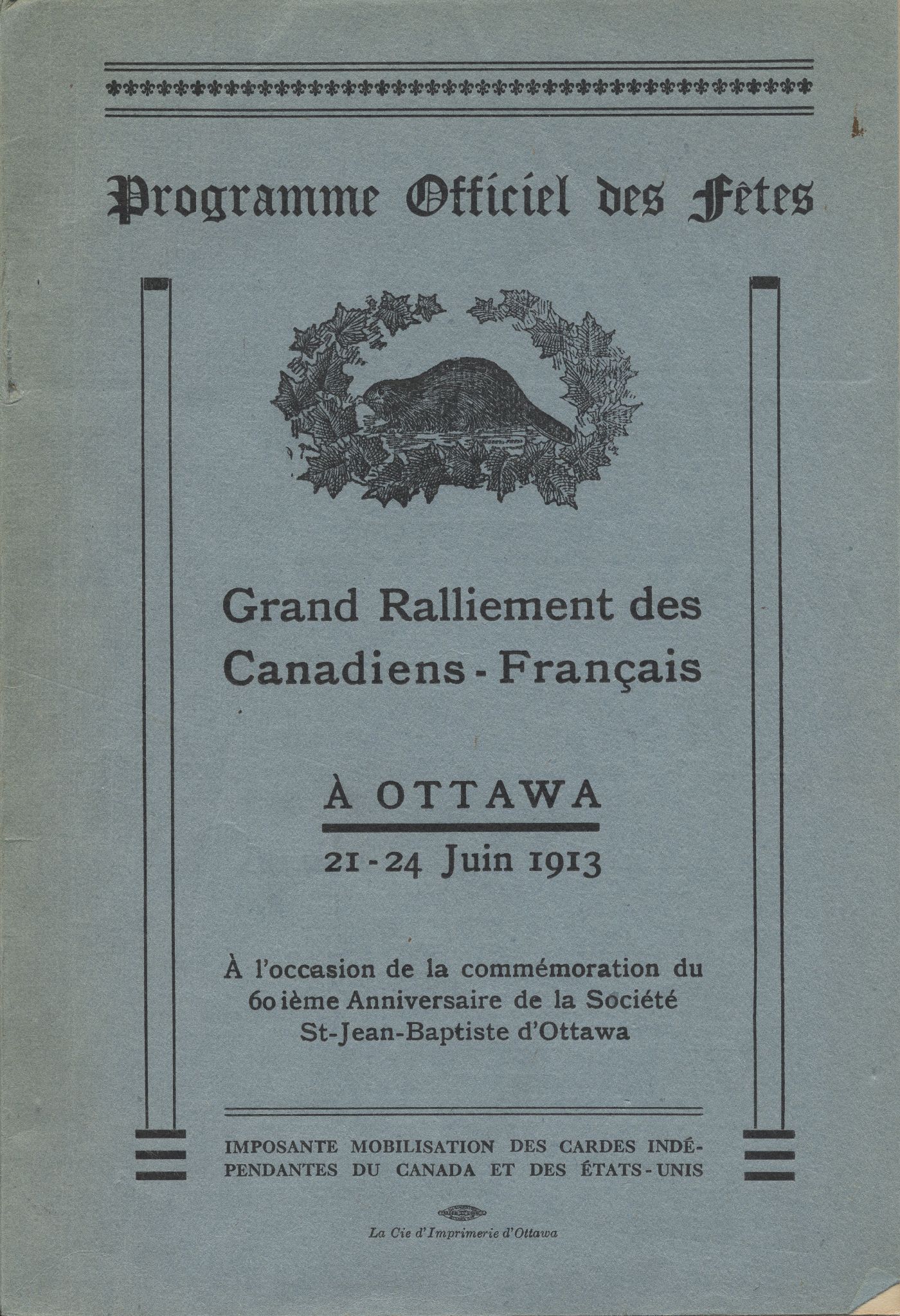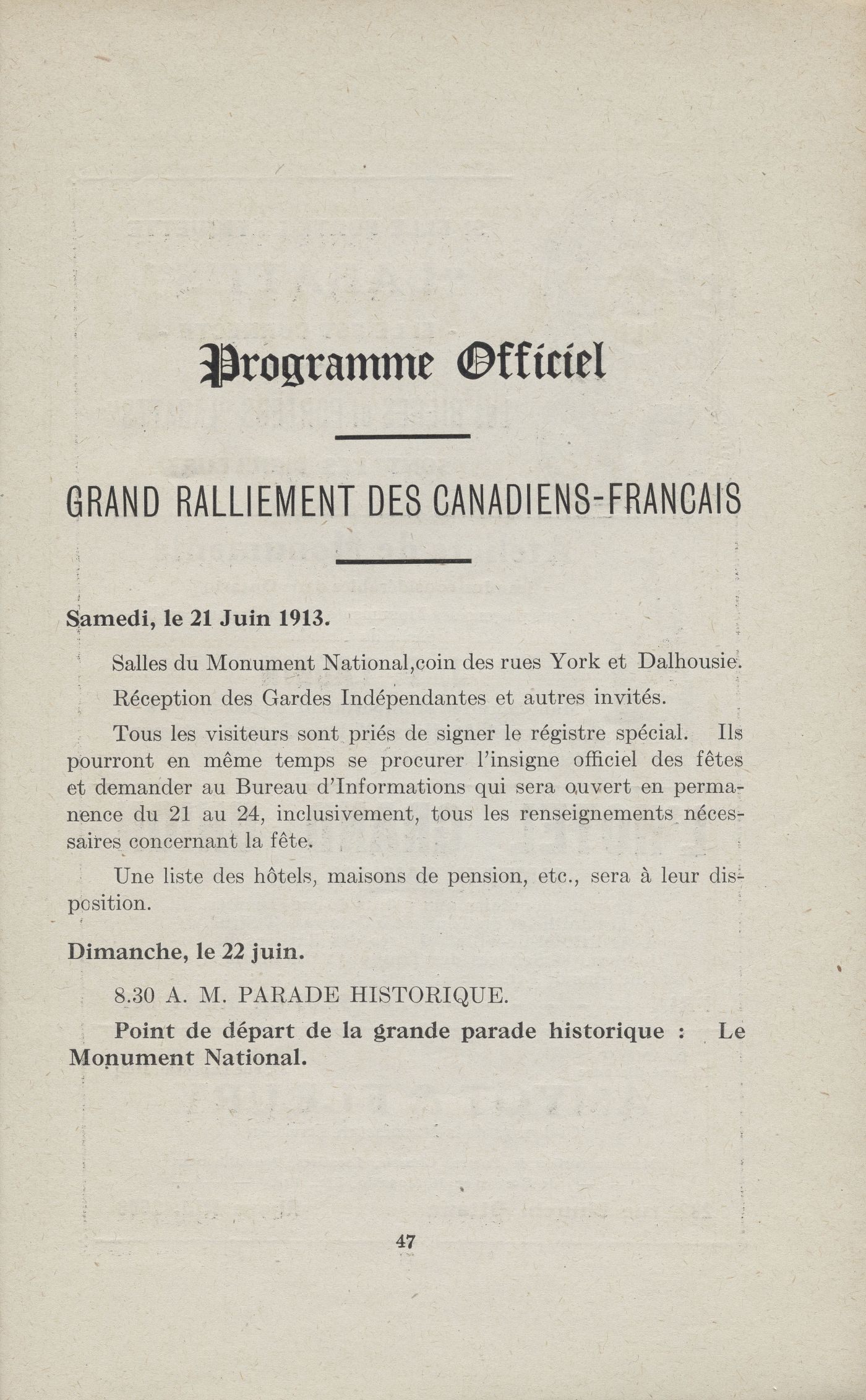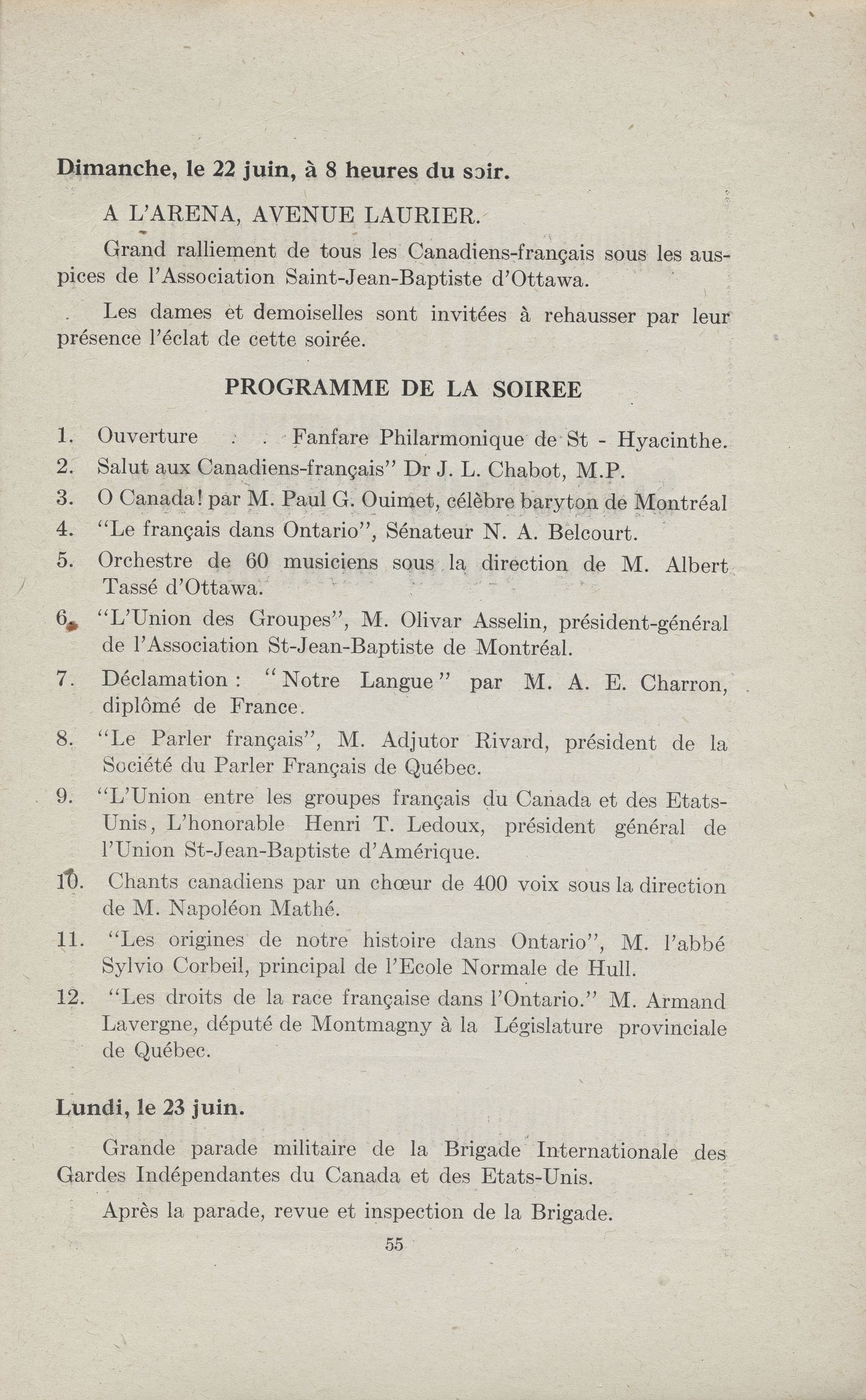The Regulation 17 crisis involves not only Ontario Francophones. It quickly spills beyond provincial borders to Quebec and the rest of French Canada – as revealed by June 22, 1913, Saint-Jean-Baptiste festivities. On that day, French Canadians numbering tens of thousands converge on Ottawa to protest Regulation 17. They come mainly from Ontario, but also from Quebec, Acadia and the United States.
In its edition published the following day, Le Droit reports that thousands of people crowded Rideau Street to watch the parade of allegorical floats decorated with different symbols of the Francophone community, including Madeleine de Verchères, Francis I and Dollard des Ormeaux. The Ontario and Quebec floats are greeted by repeated applause along the route. The first bears the inscription “Let us speak the language of our mothers.” The second reads “Be loyal to the crown and speak the language you wish (…) The decorations were beautiful and numerous. Those that attracted the most attention include the archbishopric, the Union Saint-Joseph building, the Monument national, the Rideau Street Convent, the Juniorat, etc.,”1 reports Le Droit.
After the parade, the demonstrators head to the Ottawa arena where 6,000 people attend the solemn mass celebrated by Msgr Gauthier, Archbishop of Ottawa. After the mass, the main spokespersons for the opposition movement to Regulation 17 make speeches. They include Napoléon-Antoine Belcourt, who declares:
Regulation No. 17, which the Department of Education of our province seeks to impose on us, constitutes the most direct, the most violent, the most treacherous and the most unjust of all attacks we must work to defeat. (…) Without the courageous and stubborn resistance we have mounted, it would inevitably result in the complete and short-term suppression of French as the language of instruction and communication between teachers and students in our schools.2




